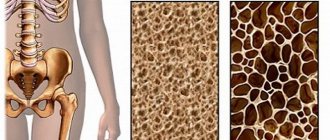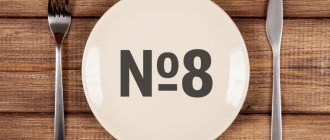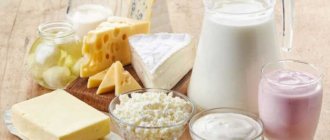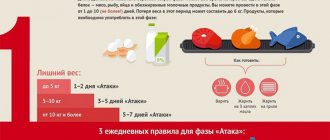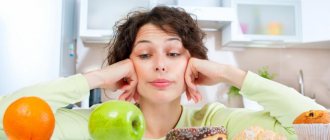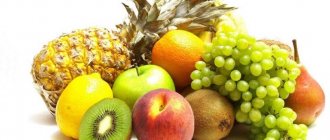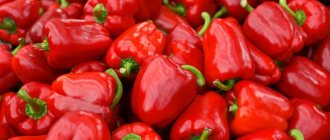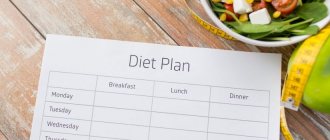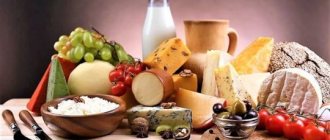Nutritional Features
Dietary restrictions in case of renal failure should be aimed at reducing the load on the kidneys to ensure their normal functioning.
There are certain standards that must be adhered to. Protein should be consumed in an amount of 60-40g per day, a mandatory supply of amino acids to the body is also necessary, and salt should be almost completely eliminated - the daily amount of salt should not exceed 1 g. In addition, nutrition for renal failure is adjusted depending on the individual characteristics of the person. Despite the fact that the amount of protein consumed should be low, the body needs fats and carbohydrates in large quantities. Bread is definitely included in the diet of such patients, but only corn or wheat.
Diet therapy also eliminates the consumption of certain drinks that are irritating to the kidneys. Many people forget to pay attention to the liquid they consume, and this is very important. Strictly prohibited drinks and foods:
Alcohol.- Rich broths from any meat.
- Strong black teas.
- Chocolate.
- Smoked and pickled products.
- Canned food.
- Hot and spicy spices.
There is a list of certain foods that can be consumed in case of kidney failure, but the amount of such food must be agreed with the doctor, these are:
- Dried fruits.
- Caviar.
- Dairy products.
- Various nuts.
- Fatty fish.
- Sunflower seeds.
- All legumes.
The basics of nutritional therapy may vary depending on the course of the disease. If renal failure has just appeared, then dietary restrictions are strict; in the case of a chronic course of the disease, the doctor may further increase the list of prohibited foods. Recipes for medicinal dishes can be very diverse; patients with kidney failure have learned to create a menu, taking into account all dietary restrictions.
The main principle of gentle nutrition is to reduce protein intake. Depending on the degree of the disease, the daily diet may contain up to 60 grams of protein food. The energy value of dishes is increased with carbohydrates and fats - this is the second principle of the diet for renal failure.
The body needs the required amount of vitamins and microelements, so the basis of nutrition should be fresh fruits and vegetables. But it is also important to consider the protein composition of dishes and the level of salt in them.
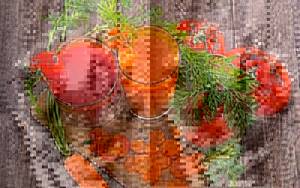
With extensive edema, fluid intake and sodium, which retains water, should be reduced as much as possible.
The principles of a gentle diet include:
- culinary processing of products - stewing, baking, boiling;
- balanced menu;
- adherence to the regime - meals with the same period of time;
- fractional meals.
Nutrition for renal failure and kidney disease requires restrictions on potassium consumption, and you also need to enrich the menu with fiber and healthy fats.
Many who are faced with food choices for kidney failure are interested in the features and nuances of the diet.
For example, very often patients wonder why bananas or dried fruits are not allowed?
It turns out that during illness the body experiences severe weakness, which is caused in particular by excess potassium in the blood.
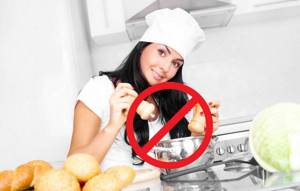
It is not excreted in time by the kidneys during this period, and therefore its intake must also be limited. So potassium, as you know, is found in bananas, dried fruits, legumes and avocados.
When choosing nutrition for renal failure, you should take into account its stage and form, and the presence of existing associated problems.
Only with this approach will a therapeutic diet have an effective effect and help the body cope with the disease.
In addition to drug therapy, the specialist must prescribe diet No. 7. This allows you to achieve a positive effect as quickly as possible.
The basis of this diet is the removal of under-oxidized metabolic products, an anti-inflammatory effect and the limitation of extractives. However, we must not forget about vitamins and minerals, as well as proteins, fats and carbohydrates in strictly regulated proportions.
Eating according to table No. 7 allows you to normalize metabolic processes. The severity with which the patient adheres to the diet depends on the severity of the disease.
It is forbidden
There is a list of foods that must be excluded from the patient’s diet due to the fact that they irritate the kidneys.
- salty foods;
- broths from meat, fish and mushrooms;
- wheat and black bread;
- chocolate, cocoa, coffee;
- canned meat and fish;
- carbonated drinks;
- mineral waters with high sodium content;
- legumes;
- onions, sorrel, garlic;
- salty fish;
- cheeses;
- sausages and smoked products;
- fatty meats and fish.
The following products are allowed for consumption:
- potatoes, carrots, beets, cauliflower;
- lettuce, tomatoes, cucumbers;
- dill, parsley;
- fruits and berries (both boiled and fresh);
- wheat bran bread;
- soups with vegetables, herbs and lemon;
- lean boiled meat;
- low-fat boiled or baked fish;
- white omelet or soft-boiled egg (no more than 2 per day);
- fermented milk products, cottage cheese and milk;
- weak teas, rosehip decoction, juices diluted with water.
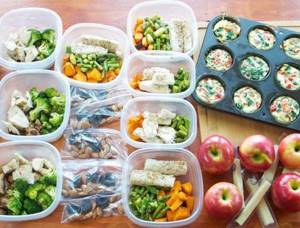
There are several points that patients with kidney disease must adhere to:
- It is necessary to follow a meal schedule whenever possible.
- The maximum amount of liquid per day is reduced to 1.5 liters.
- You need to eat in small portions, at least five times a day.
- All dishes can be salted only after cooking, and not during.
- Do not add hot seasonings or spices to dishes.
- You need to exclude fatty foods from your diet.
- Increase the amount of vegetables and fruits in your diet.
Another important point when following diet No. 7 is to reduce the amount of protein in the diet. However, protein is an important component of the human body. It is proteins that are involved in the body’s recovery process after various injuries and help fight infections.
The main organ that removes the final product of protein breakdown is the kidneys. And if there is a pathology, then the network of blood vessels that filter the blood ceases to cope with its task.
Therefore, to help your kidneys, you need to follow a low-protein diet. However, you need to remember that you cannot eliminate protein from your diet completely. And for people with minor pathologies, one fasting day a week is enough.
Indications for diet
Strict compliance with the requirements and calculation of the amount of protein, potassium and phosphorus makes it possible to improve the patient’s quality of life and extend the dialysis-free period. For calculations, patients use tables of protein, phosphorus and potassium content in foods.
Six grams of animal protein are contained in: one egg, 30 g of fish, 25 g of meat, 60 g of sour cream, 25 g of cheese, 150 g of yogurt and 25 g of seafood. Two grams of vegetable protein contain 120 g of potatoes, 150 g of oatmeal and 100 g of rice. To add flavor to food, you can use small amounts of dill, bay leaf, parsley, basil, cinnamon, onion, cloves or garlic. You can use low-protein products: amylopectin starch, sago, bread made from maize starch.
| Breakfast |
|
| Lunch |
|
| Dinner |
|
| Afternoon snack | |
| Dinner |
|
| For the night |
| Breakfast |
|
| Lunch | |
| Dinner |
|
| Afternoon snack | |
| Dinner |
|
| For the night |
| Breakfast |
|
| Lunch | |
| Dinner |
|
| Afternoon snack | |
| Dinner |
|
| For the night |
Dietary meals are organized according to treatment table No. 7.
For acute and chronic renal failure in people, the dietary features are different, but the principles are general:
- A serious decrease in the amount of protein - up to 20-70 g/day (calculated only by a doctor based on test results).
- A slight increase in fats and carbohydrates is to provide the body with the required amount of energy.
- Sufficient supply of minerals and vitamins.
- Limit salt to 2-6 g.
- Strict regulation of fluid intake (no more than 1.2 liters/day).
- Carrying out fasting days.
- Number of meals – up to 6 times a day in small portions, avoiding feelings of hunger.
- Cooking dishes by boiling, steaming, stewing. Roasting and frying are not allowed.
- The presence of fiber, which comes from plant foods (vegetables, berries, fruits).
Of the proteins, only 50-60% can be of animal origin, and in severe forms of the disease - even less. Fats up to 25% should be represented by plant products. The norm of carbohydrates is 400-450 g/day, of which up to 90 g of sugar.
The total calorie content of the diet is up to 2800 kcal/day. For patients with renal failure, treatment table No. 7 has been developed, including 7a, 7b for acute renal failure, 7c for chronic.
The goal of the nutritional system is to maximize kidney function, accelerate the elimination of metabolic products, and reduce hypertension and edema. The diet is mostly plant-based, proteins and salt are sharply limited, fats and carbohydrates are moderately reduced. In severe forms of the disease, diet 7a is used, according to which proteins are only 20 g/day, carbohydrates - 350 g, fats - 80 g, salt - 2 g. The calorie content of the diet is 2200 kcal.
Other diet features:
- The food is just boiled, steamed
- Avoid products containing oxalic acid and essential oils.
- Bread is used only without salt
- Number of meals – 5-6
- Protein is represented by plant proteins (vegetables, cereals, nuts)
- Vegetable salads are seasoned with vegetable oils
- Fasting days - once a week (on watermelons, apples, pumpkins)
Diet 7b is introduced when the patient’s condition is less severe, but it necessarily involves an additional reduction in potassium. During treatment, the protein norm increases to 40 g, carbohydrates - to 500 g, salt - to 3 g, fats remain at the level of the previous nutrition system. The volume of fluid consumed in the acute form of the pathology does not exceed the amount of water excreted in the urine per glass. The duration of the diet usually does not exceed 1-2 weeks, after which it becomes less strict.
Medical diet and its consequences
From the name it becomes clear that a protein-free diet is based on excluding the macronutrient protein from the diet. Its excess is often the cause of the occurrence and development of the above diseases. Therefore, if you limit or completely block the flow of this substance into the body of a sick person, you can speed up recovery, as well as prevent the occurrence of life-threatening complications.
By following a low-protein diet you can achieve:
- reducing acidity;
- normalization of blood glucose and cholesterol levels;
- improved blood circulation;
- removal of salt stones from the kidneys, as well as products of protein metabolism;
- weight loss (due to a decrease in intercellular fluid).
It is recommended that healthy people follow a protein-free diet 3-4 days a month in the form of fasting days. This will allow you to experience its ability to cleanse the body and not have a negative impact on the functioning of organs.
Athletes, bodybuilders and anyone who leads an active lifestyle should pay attention to the fact that excluding protein from the daily menu will lead to wear and tear of muscle tissue! Therefore, for the above categories of people, a low-protein diet is strictly contraindicated!
Basic principles of the diet
There is a certain type of diet for such patients - this is diet 7. The list of prohibited and healthy foods that are included in this dietary menu helps relieve irritation from the kidneys and improve their functioning. If a doctor prescribes diet number 7, you need to study it carefully, understand what you can and cannot eat.

Features of diet number 7:

the volume of fluid consumed should be reduced to 1 liter per day;- products containing oxalic acid, essential oils, and oxalates are excluded;
- meat consumption is reduced to 100-150 grams per day, it should be boiled;
- You can’t eat hot fried food;
- you need to eat about 4-5 times during the day;
- recipes for dishes with the addition of vegetables, cereals, potatoes, and fruits are shown; only sour cream or butter can be used as a dressing;
- meat foods include rabbit, veal, lamb, lean pork, turkey;
- The consumption of dairy products is limited, all types of cheese are strictly prohibited. Milk, low-fat cream, as well as natural cottage cheese can be eaten, but in limited quantities, it is advisable to combine them with fruits and vegetables;
- the number of eggs eaten per day should be no more than 2;
- you can eat pasta and cereals in unlimited quantities;
- Drinks from fresh berries and fruits, compote, jelly, fruit juice are necessarily included in the diet;
- spices are allowed only if they are cinnamon, vanilla, citric acid, and also a little vinegar;
- fats are acceptable, but not all - you can use butter, vegetable oil, or ghee for cooking.
It is quite possible to prepare delicious dishes from such products. The doctor will tell you about the features of such a diet and the duration of its adherence.
The following should be excluded from the diet of patients with diabetes and renal failure:
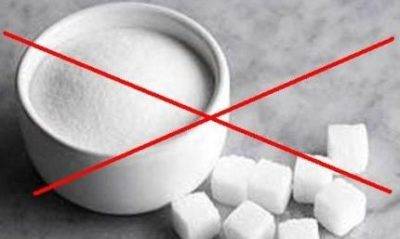
Sugar in any form.- Fruits and berries containing sugar (grapes, bananas, pears, melon).
- Margarine, butter.
- Juices.
- Any baked goods.
- Limit consumption of cereals and pasta.
In the case of diabetes mellitus and kidney failure, the doctor regulates the diet of such a patient, since this situation is considered very serious. In case of diabetes, carbohydrates are prohibited; this element increases blood glucose, which must be taken into account.
You must adhere to the main requirements:
- reducing the amount of protein consumed;
- significant reduction of sodium (salt) in food;
- reduction of phosphorus in the diet;
- careful and cautious attitude to potassium intake;
- reducing fluid intake.
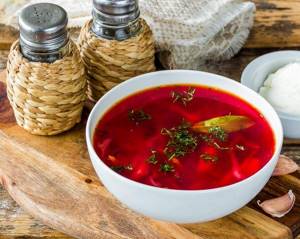
Why is this needed:
- A low-protein diet is necessary because protein increases the load on the kidney and contributes to the rapid development of the disease. Doctors advise limiting protein intake already at the first stage of the disease;
- A significant reduction in salt will help avoid the appearance and development of edema, since salt metabolism is closely related to water. Sodium retention leads to water retention in the body;
- due to the slow functioning of the kidneys, phosphorus is removed from our system more slowly, which leads to the amount of phosphorus in the body increasing, and it in turn takes calcium from the body, which can then develop into osteoporosis;
- with kidney disease, hyperkalemia develops - this is a dangerous condition that leads to heart rhythm disturbances, as well as a heart attack;
- starting from the first stage of the disease, a feeling of thirst appears and because of this the need for large fluid intake, but the kidney is not able to excrete water in sufficient quantities, and ultimately this can lead to diseases such as hypertension and edema.
The goal of dietary nutrition is to stop the death of renal nephrons. The best way to do this is to follow a low-protein diet combined with severe sodium restriction. It is this kind of nutritional system that will help remove substances from the blood that appear during the process of protein metabolism. This:
- Creatinine;
- Urea;
- Residual nitrogen;
- Uric acid.
Since with renal failure, increased creatinine, and uric acid, poor filtration of the blood occurs, these products accumulate and poison the body. In addition to their medicinal or mechanical removal, it is necessary to reduce the intake of protein foods into the body. Proper nutrition can seriously reduce creatinine levels, which should be confirmed by regular tests.
In addition to creatinine, a low-protein diet for renal failure helps reduce uremic intoxication, which occurs due to nitrogenous compounds - products of the breakdown of animal protein.
https://www.youtube.com/watch?v=uNMnG6NbtLk
If you replace animal proteins with plant proteins, the degree of uremia decreases. But a complete rejection of animal proteins is unacceptable, because this can lead to muscular dystrophy, cessation of the synthesis of hormones, antibodies, enzymes, and various toxic changes. Patients should supplement vegetable proteins with those amino acids that they do not contain with the help of special preparations.
Why should salt in a patient’s diet also be limited? The fact is that the affected kidneys remove sodium worse; it settles in the cells and allows the tissues to accumulate water. The result is the appearance of swelling and increased blood pressure. Therefore, reducing salt in the menu is an important goal for the patient. You can replace salt with various spicy vegetables, spices, dressings and light sauces.
In a healthy person, the kidneys cope well with excess phosphorus in the menu. It is also present in protein foods, mostly in animal foods. If there is kidney failure, phosphorus accumulates in the joints, destroys them and causes serious problems. Excess potassium in the menu can also harm the body - it causes muscle weakness, arrhythmia, and other heart pathologies.
Recommendations from experts
The main rule before reducing your protein intake is to consult your doctor. This is especially important if a person suffers from various types of diseases. If the doctor is notified about following a protein-free diet, or any other diet, he will be able to make adjustments to the menu to improve the result, as well as prevent side effects.
Cutting off access to one macronutrient in case of kidney disease is, of course, not enough. You also need:
- Reduce fluid intake to your daily urine output. This is approximately 300-400 ml.
- Consume no more than 20 grams daily. proteins, 80 gr. fat and 350 gr. carbohydrates.
- Eliminate salt and sugar from your diet.
- Eat 5-6 times a day in small portions.
- Minimize physical activity and any other activities that require a lot of energy.
- Create a menu in such a way that a person consumes less than 2200 kcal per day.
It is important to have an idea of exactly which foods the low-calorie food system allows and which it prohibits. Acceptable items include: cereals, boiled potatoes, fruits and vegetables (stewed, in the form of gravy in butter), bread, homemade bread and other baked goods (without adding salt and eggs), jellies, jelly and compotes, jams, preserves and honey, pancakes and pancakes (sometimes using yeast), as well as all dairy and fermented milk products (cheese and cottage cheese in small quantities).
The prohibited list includes sweets, protein foods such as fish, any meat, seafood and eggs, as well as legumes.
How to create a menu taking into account diet No. 7?
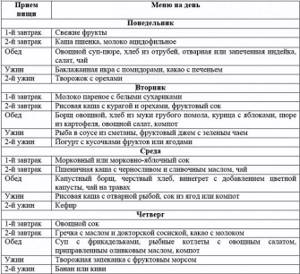
An approximate menu for the day will allow a person with chronic renal failure (CKD) to diversify their diet. Many people look for recipes on the Internet or in special magazines; you need to carefully consider such a menu and study it in detail to identify prohibited products.
| Sample menu |
|
|
|
|
Everyone can create various dishes on their own, you just need to show your imagination. The diet for chronic renal failure is usually more strict, since the human body is already quite weakened.
Many people are concerned about the variety of healthy and permissible foods for this disease. For example, dried fruits and bananas are considered very healthy foods, but their inclusion in the menu of patients with kidney failure is prohibited. The answer lies in the composition of such products. The fact is that during the course of this pathology, the human body is not able to remove potassium that enters the bloodstream. Bananas, as well as dried fruits, are rich in this substance, so you cannot saturate it with potassium even more.
The preparation of therapeutic nutrition is based not only on improving the functioning of a specific organ, but also on stabilizing the condition of the entire organism. Doctors are developing special recommendations to improve the health of people with various diseases. Therefore, in case of kidney failure, following such a menu is extremely important, otherwise the disease will only progress, which can lead to death.
vsepropechen.ru
Sample menu for the week
There are many options for dishes that can diversify the menu and make it not only healthy, but also tasty. There is no need to deprive the patient of sweets, as is the case when prescribing other dietary tables.
Day 1
For breakfast, you can make buckwheat porridge with milk and drink warm tea with lemon. Bread without salt and a soft-boiled egg are perfect as a snack. For lunch, you can cook cereal soup, for example with rice and chicken.
Make cutlets from steamed veal meat and dried fruit compote. In the afternoon you can have a snack with bread and drink a glass of tomato juice. For dinner, you can treat yourself to sweet curd pudding with jam and drink tea with lemon.
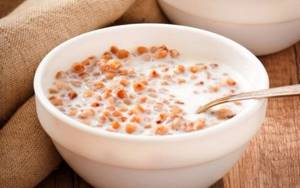
Breakfast rich in minerals
Day 2
For breakfast, milk soup with noodles or rice, tea. You can eat jelly during a snack. For lunch, vegetable soup with potatoes and cauliflower and vegetable meatballs with meat perfectly satisfy your hunger.
Ryazhenka is suitable for an afternoon snack. A potato casserole with vegetables and steamed chicken cutlets would be good for dinner.

Minced lean meats are perfect for meatballs
Day 3
For breakfast, prepare cheesecakes with fruit syrup and tea with milk. For a snack, kefir and cookies. For lunch, soup with buckwheat in vegetable broth, stew with vegetables, boiled chicken breast. For an afternoon snack, bake an apple with honey in the oven. For dinner, fruit pilaf and tea with milk.
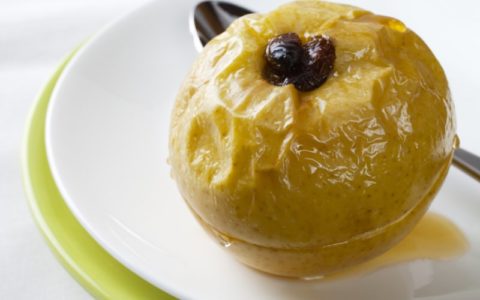
Baked apples can be either a complete afternoon snack or a dessert.
Day 4
For breakfast, a soft-boiled egg and a salad of boiled beets with olive oil. A fruit salad with natural yoghurt is suitable as a snack.
For lunch, stewed vegetables, with lean meat and dried fruit compote. In the afternoon, berries or popsicles. For dinner, cabbage rolls and vegetable salad, to which you can add cottage cheese.
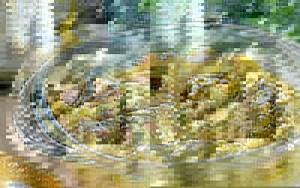
Stuffed cabbage rolls - an easy to prepare and nutritious dish
Day 5
For breakfast, cottage cheese casserole and tea. You can use yogurt for a snack. For lunch, vegetable soup with millet and steamed meat. Berries are perfect for an afternoon snack. For dinner, you can prepare pasta with meatballs and vegetable salad with vegetable oil.

Yogurt, especially homemade, is a balanced snack in all respects
Day 6
For breakfast, steamed omelet with herbs and orange juice, which is diluted with water 1:1. For a snack, you can use cottage cheese and weak black tea. For lunch, buckwheat soup with lean meat.
For an afternoon snack, toast with honey and weak coffee with low-fat cream. For dinner, mashed potatoes with tomato and cucumber salad and apple compote.

Mashed potatoes, everyone's favorite, delicious dish
Day 7
For breakfast, cottage cheese with berries and jelly. Freshly squeezed juice is suitable for a snack. For lunch, vegetarian borscht and steamed fish with vegetables. For afternoon snack, grated carrots. For dinner, cottage cheese pudding or vegetable pilaf.
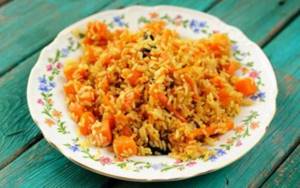
Pilaf with vegetables does not take much time to prepare
Table No. 7, despite the reduced amount of salt and other prohibitions, is complete and varied. It allows, in combination with drug therapy, to restore kidney health. This diet is designed to normalize metabolism and has a beneficial effect on the body as a whole.
If you suspect a kidney or genitourinary system disease, you should consult a doctor. Based on laboratory tests, the specialist will not only prescribe medications, but also select a diet.
All photos and videos in this article are intended for visual acquaintance with the topic. Take care of your health and bon appetit.
Fully or partially limited products
During the period of exacerbation and rehabilitation, it is important to provide the body with all the necessary vitamins and microelements. There is a list of permitted and recommended products that help restore water and electrolyte balance and metabolism.
To help the kidneys cope with the load, the diet menu includes the following:
- bread and other baked goods without protein from corn starch and bran without salt;
- salt-free vegetable soups;
- poultry, lean veal, rabbit or turkey;
- low-fat types of fish - perch, pike perch, pike, roach;
- boiled or baked vegetables;
- pasta;
- dairy products in limited quantities;
- sweets;
- fruits in any form.
Milk, tomato or vegetable marinade are allowed as sauces. To maintain water balance, the diet includes a decoction of rose hips or lingonberries, non-concentrated fruit juices, weak tea, fruit compotes, and berry fruit drinks.
You can treat yourself to various sweets, mousses, jams, jelly sweets, if there are no concomitant diseases that preclude the consumption of sugar. When acute renal failure occurs, the diet should not contain large amounts of glucose.
During the summer, you should eat watermelon. It has a diuretic effect and fluid is not retained in the body.
| Proteins, g | Fats, g | Carbohydrates, g | Calories, kcal | |
Vegetables and greens | ||||
| zucchini | 0,6 | 0,3 | 4,6 | 24 |
| cauliflower | 2,5 | 0,3 | 5,4 | 30 |
| potato | 2,0 | 0,4 | 18,1 | 80 |
| green onion | 1,3 | 0,0 | 4,6 | 19 |
| carrot | 1,3 | 0,1 | 6,9 | 32 |
| beet | 1,5 | 0,1 | 8,8 | 40 |
| celery | 0,9 | 0,1 | 2,1 | 12 |
| tomatoes | 0,6 | 0,2 | 4,2 | 20 |
| pumpkin | 1,3 | 0,3 | 7,7 | 28 |
| horseradish | 3,2 | 0,4 | 10,5 | 56 |
| garlic | 6,5 | 0,5 | 29,9 | 143 |
Fruits | ||||
| watermelon | 0,6 | 0,1 | 5,8 | 25 |
| melon | 0,6 | 0,3 | 7,4 | 33 |
| apples | 0,4 | 0,4 | 9,8 | 47 |
Berries | ||||
| strawberry | 0,8 | 0,4 | 7,5 | 41 |
Cereals and porridges | ||||
| buckwheat (kernel) | 12,6 | 3,3 | 62,1 | 313 |
| white rice | 6,7 | 0,7 | 78,9 | 344 |
| sago | 1,0 | 0,7 | 85,0 | 350 |
Confectionery | ||||
| jam | 0,3 | 0,2 | 63,0 | 263 |
| jelly | 2,7 | 0,0 | 17,9 | 79 |
| milk candies | 2,7 | 4,3 | 82,3 | 364 |
| fondant candies | 2,2 | 4,6 | 83,6 | 369 |
| paste | 0,5 | 0,0 | 80,8 | 310 |
Raw materials and seasonings | ||||
| mustard | 5,7 | 6,4 | 22,0 | 162 |
| cinnamon | 3,9 | 3,2 | 79,8 | 261 |
| honey | 0,8 | 0,0 | 81,5 | 329 |
| ground black pepper | 10,4 | 3,3 | 38,7 | 251 |
| dried parsley | 22,4 | 4,4 | 21,2 | 276 |
| sugar | 0,0 | 0,0 | 99,7 | 398 |
| milk sauce | 2,0 | 7,1 | 5,2 | 84 |
| sour cream sauce | 1,9 | 5,7 | 5,2 | 78 |
| caraway | 19,8 | 14,6 | 11,9 | 333 |
| dried dill | 2,5 | 0,5 | 6,3 | 40 |
Dairy | ||||
| milk | 3,2 | 3,6 | 4,8 | 64 |
| kefir | 3,4 | 2,0 | 4,7 | 51 |
| cream | 2,8 | 20,0 | 3,7 | 205 |
| sour cream | 2,8 | 20,0 | 3,2 | 206 |
| curdled milk | 2,9 | 2,5 | 4,1 | 53 |
| acidophilus | 2,8 | 3,2 | 3,8 | 57 |
| yogurt | 4,3 | 2,0 | 6,2 | 60 |
Meat products | ||||
| boiled beef | 25,8 | 16,8 | 0,0 | 254 |
| boiled beef tongue | 23,9 | 15,0 | 0,0 | 231 |
| boiled veal | 30,7 | 0,9 | 0,0 | 131 |
| rabbit | 21,0 | 8,0 | 0,0 | 156 |
Bird | ||||
| boiled chicken | 25,2 | 7,4 | 0,0 | 170 |
| turkey | 19,2 | 0,7 | 0,0 | 84 |
Eggs | ||||
| chicken eggs | 12,7 | 10,9 | 0,7 | 157 |
Oils and fats | ||||
| corn oil | 0,0 | 99,9 | 0,0 | 899 |
| olive oil | 0,0 | 99,8 | 0,0 | 898 |
| sunflower oil | 0,0 | 99,9 | 0,0 | 899 |
| ghee | 0,2 | 99,0 | 0,0 | 892 |
Non-alcoholic drinks | ||||
| mineral water | 0,0 | 0,0 | 0,0 | — |
| black tea with milk and sugar | 0,7 | 0,8 | 8,2 | 43 |
Juices and compotes | ||||
| apricot juice | 0,9 | 0,1 | 9,0 | 38 |
| carrot juice | 1,1 | 0,1 | 6,4 | 28 |
| pumpkin juice | 0,0 | 0,0 | 9,0 | 38 |
* data is per 100 g of product
| Proteins, g | Fats, g | Carbohydrates, g | Calories, kcal | |
Vegetables and greens | ||||
| vegetables legumes | 9,1 | 1,6 | 27,0 | 168 |
| sauerkraut | 1,8 | 0,1 | 4,4 | 19 |
| bulb onions | 1,4 | 0,0 | 10,4 | 41 |
| canned cucumbers | 2,8 | 0,0 | 1,3 | 16 |
| pickles | 0,8 | 0,1 | 1,7 | 11 |
| radish | 1,2 | 0,1 | 3,4 | 19 |
| white radish | 1,4 | 0,0 | 4,1 | 21 |
| turnip | 1,5 | 0,1 | 6,2 | 30 |
| tomatoes | 0,6 | 0,2 | 4,2 | 20 |
| canned tomatoes | 1,1 | 0,1 | 3,5 | 20 |
| spinach | 2,9 | 0,3 | 2,0 | 22 |
| sorrel | 1,5 | 0,3 | 2,9 | 19 |
Fruits | ||||
| apricots | 0,9 | 0,1 | 10,8 | 41 |
| bananas | 1,5 | 0,2 | 21,8 | 95 |
| figs | 0,7 | 0,2 | 13,7 | 49 |
| nectarine | 0,9 | 0,2 | 11,8 | 48 |
| peaches | 0,9 | 0,1 | 11,3 | 46 |
Mushrooms | ||||
| mushrooms | 3,5 | 2,0 | 2,5 | 30 |
| marinated mushrooms | 2,2 | 0,4 | 0,0 | 20 |
Nuts and dried fruits | ||||
| raisin | 2,9 | 0,6 | 66,0 | 264 |
| dried apricots | 5,2 | 0,3 | 51,0 | 215 |
| dried apricots | 5,0 | 0,4 | 50,6 | 213 |
| dates | 2,5 | 0,5 | 69,2 | 274 |
Cereals and porridges | ||||
| semolina | 10,3 | 1,0 | 73,3 | 328 |
| cereals | 11,9 | 7,2 | 69,3 | 366 |
| corn grits | 8,3 | 1,2 | 75,0 | 337 |
| pearl barley | 9,3 | 1,1 | 73,7 | 320 |
| millet cereal | 11,5 | 3,3 | 69,3 | 348 |
Flour and pasta | ||||
| pasta | 10,4 | 1,1 | 69,7 | 337 |
Chocolate | ||||
| chocolate | 5,4 | 35,3 | 56,5 | 544 |
Raw materials and seasonings | ||||
| ginger | 1,8 | 0,8 | 15,8 | 80 |
| ketchup | 1,8 | 1,0 | 22,2 | 93 |
| mayonnaise | 2,4 | 67,0 | 3,9 | 627 |
| tomato sauce | 1,7 | 7,8 | 4,5 | 80 |
Meat products | ||||
| pork | 16,0 | 21,6 | 0,0 | 259 |
| salo | 2,4 | 89,0 | 0,0 | 797 |
Bird | ||||
| smoked chicken | 27,5 | 8,2 | 0,0 | 184 |
| duck | 16,5 | 61,2 | 0,0 | 346 |
| smoked duck | 19,0 | 28,4 | 0,0 | 337 |
| goose | 16,1 | 33,3 | 0,0 | 364 |
Fish and seafood | ||||
| dried fish | 17,5 | 4,6 | 0,0 | 139 |
| smoked fish | 26,8 | 9,9 | 0,0 | 196 |
| black caviar | 28,0 | 9,7 | 0,0 | 203 |
| salmon caviar granular | 32,0 | 15,0 | 0,0 | 263 |
| canned fish | 17,5 | 2,0 | 0,0 | 88 |
Oils and fats | ||||
| animal fat | 0,0 | 99,7 | 0,0 | 897 |
| cooking fat | 0,0 | 99,7 | 0,0 | 897 |
Juices and compotes | ||||
| tomato juice | 1,1 | 0,2 | 3,8 | 21 |
The patient is allowed the following food:
- Bread without salt - wheat, corn starch.
- Vegetable soups, with potatoes, cereals.
- Lean beef, rabbit, poultry, lean fish (strictly in accordance with the protein norm).
- Cottage cheese (only if there is no meat or fish that day), milk, sour cream, cream, sour milk - taking into account the total amount of protein.
- Eggs - no more than half a day soft-boiled.
- Rice.
- Vegetables, herbs (except forbidden ones) - stewed, in salads, vinaigrettes.
- Fruits – any kind.
- Sweets - jelly, compotes, honey, jam, candies without chocolate.
- Gravy, sauces with tomatoes, sour cream, cinnamon, fruit and vanilla, with boiled (stewed) onions, bay leaves.
- Lightly brewed black tea, rosehip infusion, herbal teas, fruit juices.
- Vegetable oils, butter.
The list of foods that cannot be included in the menu for this disease is quite extensive. Alcohol, strong tea and coffee, chocolate, cocoa are strictly prohibited - these foods create a high load on diseased kidneys.
The following foods are also prohibited:
- mushrooms;
- refractory fats;
- sausage;
- salty foods;
- canned food;
- sorrel;
- spinach;
- legumes;
- hot spices;
- fatty sauces;
- marinades;
- garlic;
- radish;
- fat meat;
- broths;
- spicy snacks;
- cheese;
- mineral waters with sodium;
- ice cream;
- cauliflower;
- baked goods, puff pastry;
- bananas;
- dried fruits.
People with chronic forms of pathology eat pasta, but very limitedly. Legumes are strictly prohibited in the acute form of the disease, but during the compensated stage in small quantities they are not contraindicated. Following a diet without failure will help stabilize your health, reduce the progression of the disease and improve a person’s well-being.
Prohibited foods for kidney failure
Exceptions from the menu
A low-protein diet for renal failure involves giving up many familiar, but harmful to the urinary system dishes. Since nutrition, especially during an exacerbation, will be gentle, and the body needs to get rid of metabolites and excess fluid as soon as possible, the following prohibited foods are excluded from the diet in case of renal failure:
- soups based on mushrooms, meat, legumes;
- bread containing salt;
- canned food;
- sausages and smoked meats;
- semi-finished products;
- legumes;
- mustard and horseradish sauces;
- cheeses;
- coffee and black tea;
- chocolate;
- cocoa;
- greens containing oxalic acid;
- hot spices, seasonings.
In addition, the minimum amount of protein in the diet should be of plant origin. Foods containing salt should be completely avoided. The calorie content of the menu should be at the level of 2 thousand kcal.
You need to approach the cooking process with caution. In case of chronic renal failure, products are processed using the following methods:
- boil;
- baked;
- steamed.
You can fry foods only lightly and already during the period of remission of the disease; in acute cases, this type of heat treatment is strictly prohibited; such recipes are completely excluded from the diet with a high degree of chronic renal failure.
Low protein diet recipes for kidney disease
Many tasty and nutritious dishes can be prepared from permitted foods for chronic renal failure. These can be various recipes for vegetable or fruit salads, side dishes, main courses and soups.
Fish salad

To prepare it you need:
- 200 grams of boiled perch;
- 150 grams of potatoes;
- one boiled egg;
- 2 tomatoes;
- greenery;
- olive oil, balsamic vinegar for dressing.
First you need to boil the potatoes. To prevent it from losing its nutritional value, it is better not to peel it. Finely chop the boneless fish, cut the egg and potatoes into cubes, and do the same with the tomatoes and herbs. Mix the ingredients in a salad bowl, season with oil and vinegar.
Lenten borscht
For 3 servings you will need:
- 100 grams of beets;
- 150 grams of potatoes;
- 70 grams of carrots;
- 50 grams of onion;
- 2 tomatoes;
- 200 grams of white cabbage;
- 1 teaspoon sugar;
- 2 grams of salt;
- greenery.
Peel the vegetables, boil the beets until half cooked and chop them. Peel the potatoes and cut into small cubes. Chop the onions, carrots and tomatoes, lightly simmer in vegetable oil. Place potatoes and beets into boiling water, after 10 minutes add finely chopped cabbage.
After the vegetable broth boils, you can add the dressing. 5 minutes before readiness, add sugar. Serve lean borscht with herbs and sour cream. You can add salt to the soup only if the disease is in remission.
It is served with a side dish of rice, wheat porridge or buckwheat. To prepare you need:
- 150 grams of boiled chicken;
- 300 grams of milk;
- 2 tablespoons flour;
- 20 grams of butter;
- 1 teaspoon sugar.
Cut boiled white chicken meat into slices. Dilute milk with water and boil. Add sugar as desired. Dry the flour in a frying pan until golden brown and slowly add the milk. When the mixture thickens, add butter. The meat can be served with the sauce or boiled in it for 10 minutes.
When preparing dishes as part of a diet for kidney failure, finished products can be salted, but only within the permissible limits.
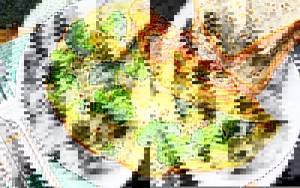
nephrologinfo.ru
The main problem for those who are prescribed such a diet is addiction. Meals are scheduled by the hour, and the patient must be patient. And it’s even better if he feels the support of loved ones. Creating a menu for the week can help here. This will allow you not to think about what you can cook and what you can eat.
The goal of this diet is to reduce the amount of salt in the body, reduce the load on the kidneys and remove excess nitrogenous products. And it is important to remember that you will not always have to adhere to such a diet. Based on the tests, the doctor will add foods from the list of not recommended for consumption back to the patient’s diet.
Vegetarian borscht is perfect for the first course. This is a simple and tasty dish.
Vegetarian borscht
- 1 carrot grated
- 1 potato cut into cubes
- 100 g shredded cabbage
- 1 onion
- 1 beet
First grate the beets and boil them in a small amount of water for 5 minutes. Add 1 tablespoon of 6% vinegar. Boil carrots, potatoes, cabbage and finely chopped onions in one and a half liters of water. Add beets along with the broth.
A few minutes before the end of cooking, add 3 grated tomatoes without skin, 1 teaspoon of sugar, and dill. When serving, you can add a little sour cream.
Omelette with vegetables
- 5 eggs
- 1.5 liters of milk
- 30 g butter
- broccoli, peppers, carrots
Vegetables must first be boiled and finely chopped. Beat eggs with milk and add to vegetable mixture.
Grease a baking dish with oil, pour in the mixture and bake in an oven preheated to 180 degrees. After 10 minutes, remove and place a few tomato slices on top of the omelette and bake for a few more minutes.
Vegetable stew
- 3 potatoes
- 2 zucchini
- 400 g cabbage
- 1 carrot
- 1 pepper
- vegetable oil
Wash, peel and cut the vegetables into cubes, grate the carrots. Heat the oil in a heavy-bottomed frying pan and add the carrots. Simmer for 5 minutes and add zucchini and potatoes. Pour in just enough water to cover the vegetables.
Chop the pepper and cabbage thinly and add to the rest of the vegetables. Simmer for 30 minutes. The main thing is to ensure that the water does not boil away completely. Add a little dill.
Salad with shrimp
- 400 g shrimp
- 1 apple
- 2 potatoes
- olive oil
Boil shrimp without salt and cut into pieces. Boil potatoes and cool. After this, cut into small cubes. Remove the core from the apple and also cut into cubes. Mix all ingredients and season with oil.
- 1 beet
- 1 carrot
- 2 potatoes
- 2 fresh cucumbers
- 100 g seaweed
- olive oil
Boil carrots, beets and potatoes, peel and chop. Cut the cucumbers as convenient. Chop the seaweed, mix all the ingredients, add a little 3% vinegar and oil. Before serving, garnish with a sprig of dill.


